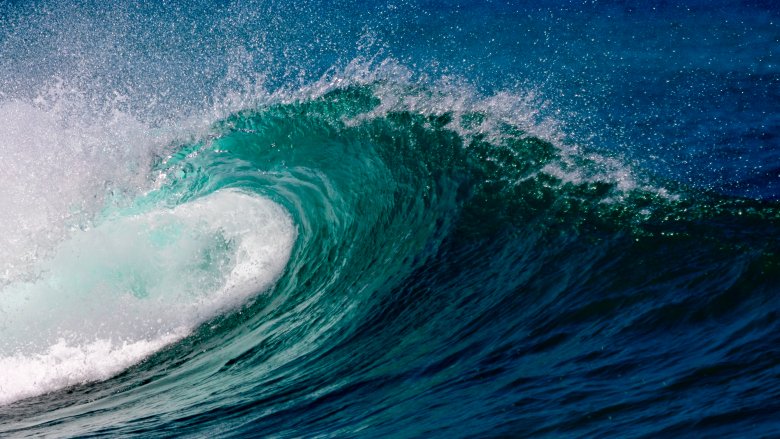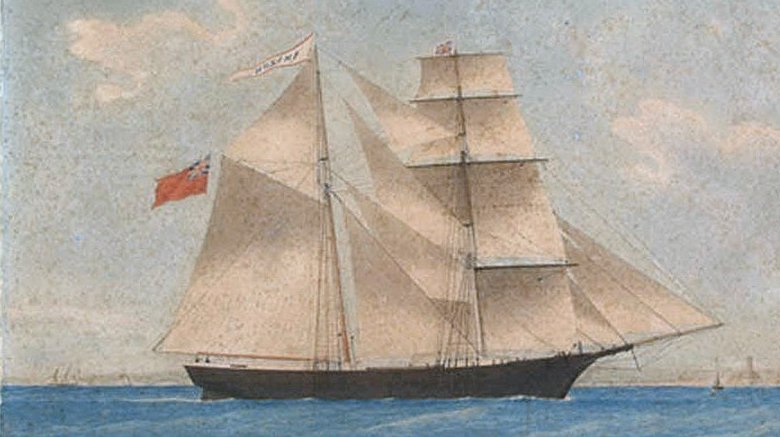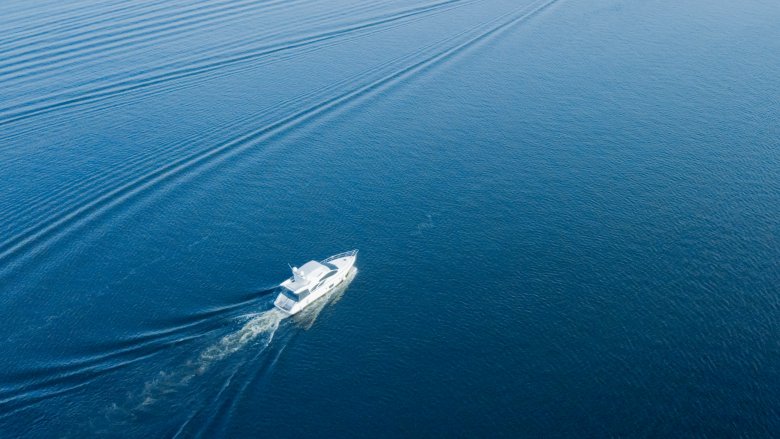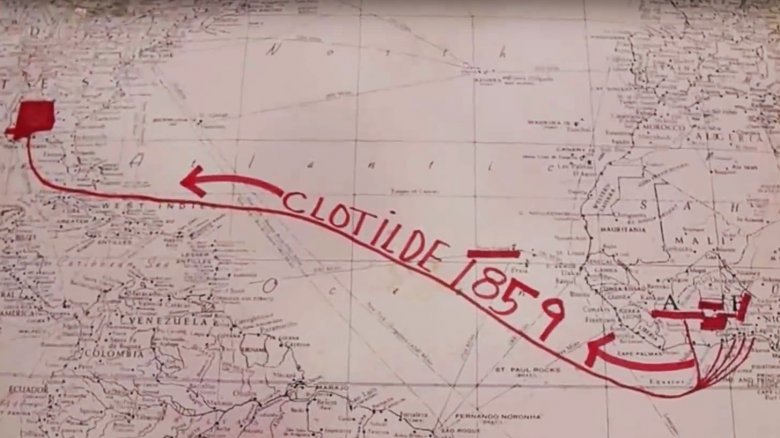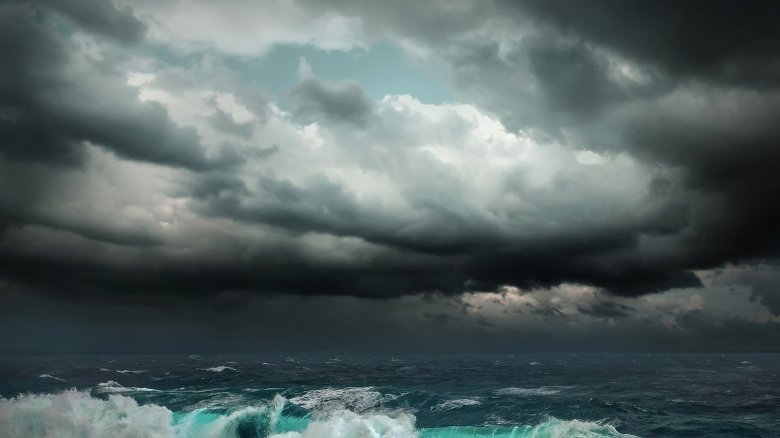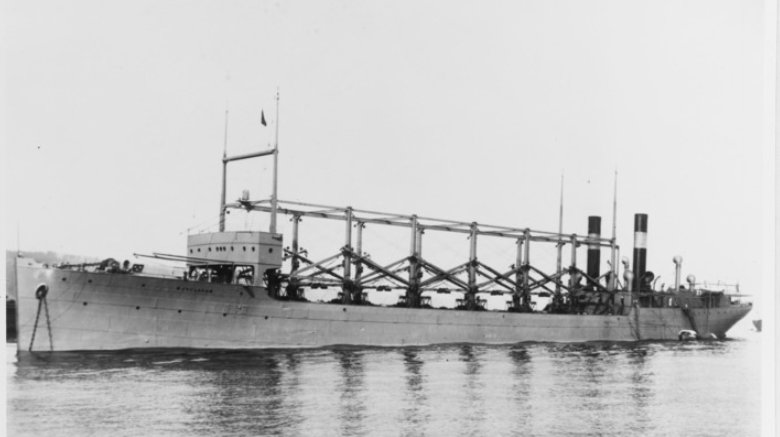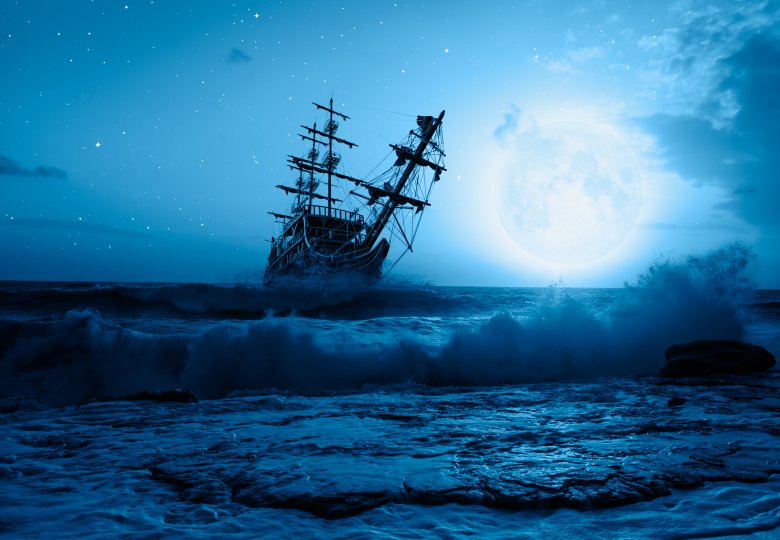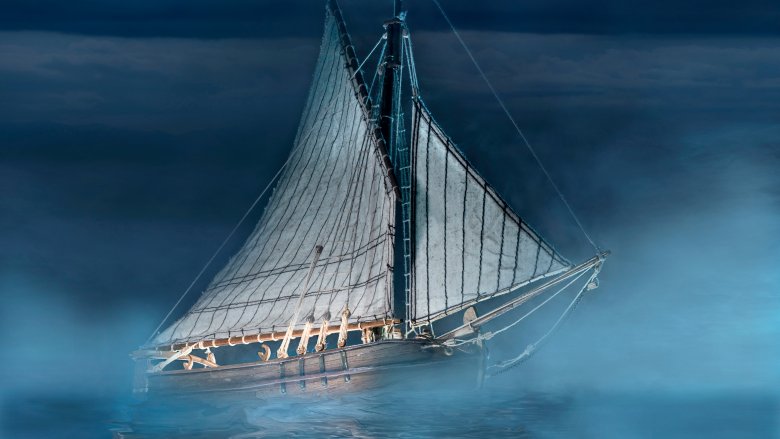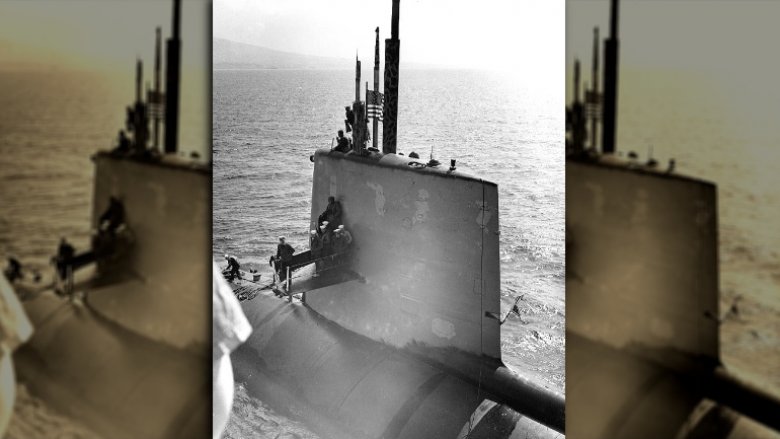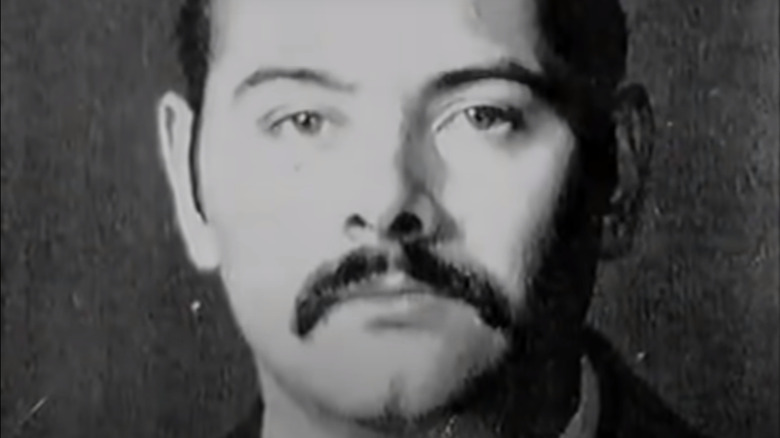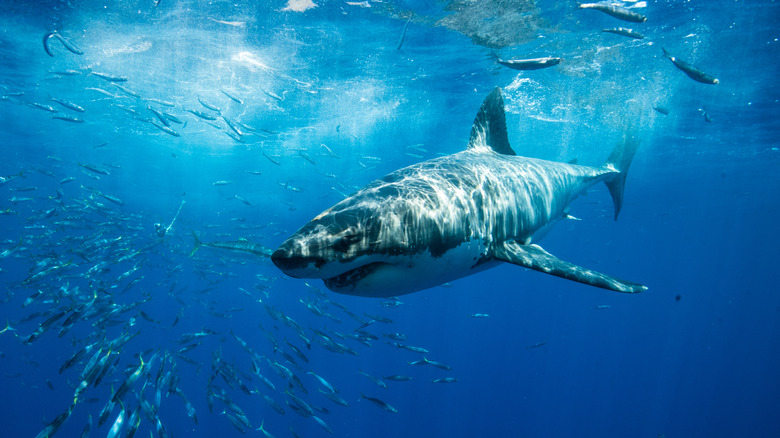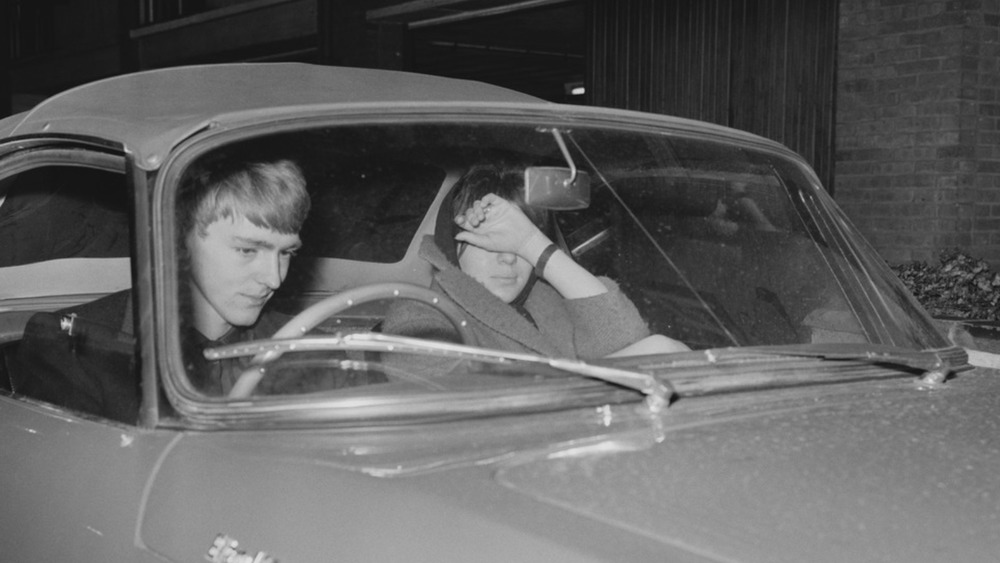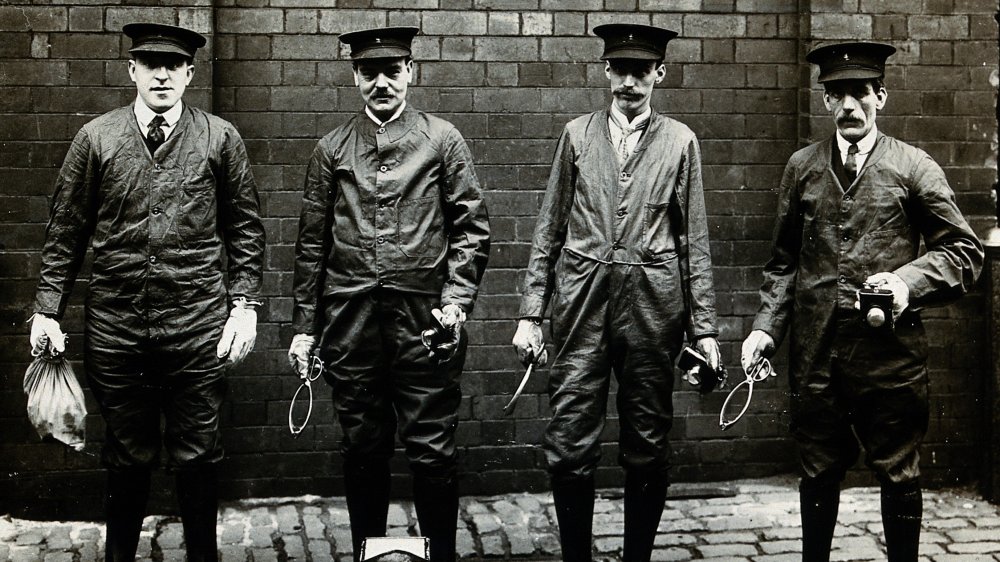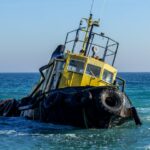
Ships That Mysteriously Vanished
Oceans may be great for keeping a vast global buffet of seafood nice and tasty fresh, but when it comes to getting from A to B, they leave a lot to be desired. Oceans are big, drowny, and not all that cooperative when it comes to easily recognized landmarks. Nevertheless, human history is full of stories of how we’ve opted to spurn the safe crunchiness of our natural habitat in favor of sloshy adventures on the high seas.
Ships go missing — a lot — and for some reason, we love stories about it. Maybe they remind us that as far as the planet is concerned, we’re not all that. Perhaps they caution us about taking the unknown for granted. Or maybe it’s just the undeniable coolness of pirates, kraken, and other darker monstrosities lurking in the depths of our collective imagination.
Whatever the reason, there’s something oddly compelling about ships that vanish without a trace. Here are a few memorable examples.
This ship's short tour got extended
In 1989, four experienced sailors boarded the trimaran vessel Rose-Noëlle and set out on a leisure voyage off the coast of New Zealand. A huge storm unexpectedly rolled in and a “freak wave” (which sounds kind of judgmental but is really just ocean lingo for a massive, ship-crushing swell) capsized the craft. The next part of this story is hardly surprising. The ship vanished without a trace, and after an exhaustive search with no wreckage, survivors or emergency beacons found, those aboard the Rose-Noëlle were declared lost at sea, eternal denizens of Davy Jones’ locker and extremely dead (to paraphrase a little).
Except they weren’t. After miraculously surviving the freak wave’s initial onslaught, the crew found themselves stranded in the ocean. For months, they drifted in a vast meandering loop around the Pacific Ocean. Going the full Gilligan, they constructed a small shelter inside the scuttled ship, rigged up a fresh water collection system and eventually figured out a way to catch a steady supply of fish using part of the ship’s sail. Some 119 days later, the crew members scrambled ashore on Great Barrier Island near Tonga, presumably smelling like death but very much alive.
One of the survivors, John Glennie, said of the ordeal, “In that whole four months adrift I never had one doubt I wouldn’t get out of it. The only thing I didn’t know was how.”
A Dutch ship's last message
In February 1948, vessels in the straits of Malacca received this Morse code emergency signal: “All Officers, including the Captain, are dead. Lying in chartroom and bridge. Possibly whole crew dead. … I die.” Despite the message’s less than upbeat vibe, several vessels, whose captains were clearly tough old salts who laughed in the face of peril, rushed to investigate. But the ship had vanished.
Through some clever radio triangulation, Morse code operators eventually narrowed down the vessel’s whereabouts to a searchable area, and a nearby vessel closed in on the location.
A Dutch vessel, the Ourang Medan, drifted aimlessly with no signs of movement aboard. All attempts at hailing the vessel were met with silence, and after what was hopefully a firm agreement on triple-time and a preparatory dose of pharmacy-strength Immodium, a boarding party was formed and sent to investigate. Every crew member was dead, with looks of abject terror on their faces.
While stories like these are fodder for folks who wish aliens would show up already, there’s a more earthbound explanation. The Ourang Medan may have been smuggling potassium cyanide or some other potent nerve gas. This would explain the appearance of the corpses’ faces. Of course, if you’re looking for a nice hot dish of spaghetti monster, there is the juicy detail paranormal aficionados like to mention. Grab your flashlight and spooky voice — maybe the dead were pointing toward an unknown enemy.
Alcohol isn't always your friend in a ship on the open seas
The 1800s is kind of a high-water mark for nautical disappearances. The jewel in the crown has to be the Mary Celeste. In 1872, the Mary Celeste was spotted drifting at full sail 600 miles off the coast of Portugal. The vessel had left New York eight days earlier and then vanished.
What the boarding party found was puzzling. The ship was abandoned. There was extra water in the bilge and assorted navigational equipment was curiously missing, but the ship was perfectly operational, with no evidence of foul play, mutiny, or nefarious piratical goings-on. What happened to the Mary Celeste between its last known location and where it was found remains a mystery. Of course, there are any number of crazy spectral theories. There are also a handful of mundane explanations (including the possibility of insurance fraud), but these have been dismissed for a variety of solid reasons.
Arguably the most plausible explanation relates to the ship’s cargo: alcohol. An undersea quake may have caused nine alcohol barrels to ignite in a flash explosion. This wouldn’t have caused any lasting damage, but may have been scary enough (given the 1,692 other barrels of flammable booze onboard) to panic the crew into abandoning ship. On one level, this is a disappointingly mundane explanation. It’s much more fun to point an accusing finger at an army of unholy fishmen, for example. But in another way it’s perfect. Sometimes the line between order and chaos is one guy screaming, “Jump! She’s gonna blow!”
Why do people give their ships spooky names?
In December 1967, hotel magnate Dan Burack and a buddy set sail off the coast of Miami in Dan’s swanky luxury cabin cruiser, Witchcraft. Their mission: to check out the groovy Christmas lights along Miami’s shoreline.
It’s a fair bet Burack was feeling pretty smug out on the water that evening. Witchcraft was one of those crafts a boat salesman would slap fondly and say “this baby may be expensive, but Jumpin’ Jiminy she’s gonna keep you out of the drink in style” (or something equally representative of a more innocent era). Witchcraft was considered practically unsinkable (a claim made of another famous ship which ultimately spawned the most boring movie of cinematic history). At 9 p.m., Burack radioed the coast guard, reporting that he had “hit something” and needed a tow back to shore. The operator who received the message later reported that Burack sounded calm — understandable given that his floating mansion was anchored less than a mile offshore.
No gold stars for seeing where this story’s heading. Twenty minutes later, the coast guard arrived and found nothing. Over the next few days, 24,500 square miles of ocean were searched. No wreckage, no Dan Burack, no unsinkable ship. There are no credible theories for the ship’s disappearance.
The slave ship that vanished from history
Not all ships vanish from the ocean. Some vanish from history. The Clotilda illegally shipped over 100 slaves from Benin to Alabama, decades after transporting slaves into the U.S. had been outlawed. The ignominious story of the Clotilda begins with a bet. A local businessman wagered that he could bring a ship of slaves into the South. He accordingly kidnapped 110 innocent West Africans and shipped them across the sea. In 1860 the Clotilda was piloted by tugboat up the Mobile River under cover of darkness with its human cargo.
This represents one of the final closing moments in a dark period in U.S. history, and as such, the ship’s existence and whereabouts are of great historical significance. But until recently, no one could find it. The ship had reportedly been burned to conceal evidence of the crime (which was a hanging offense), but no trace of the burnt wreckage could be found.
For years there was speculation about where this missing piece of history had ended up. But the shipwreck was finally discovered at the bottom of the Mobile River, only a little way from where historians had predicted it would be. Clotilda’s discovery put an end to doubt about the vessel’s final voyage.
Why oceanic voyages and bad cell coverage don't mix
A rickety, 85-year-old sailing yacht lacking much of the safety equipment you find in modern vessels, the Nina wasn’t exactly the ideal craft for clueless landlubbers in search of oceangoing adventure. But that’s why the Nina was so popular among intrepid tourists seeking a spicy dollop of danger. On May 29, 2013, a gaggle of excited thrill-seekers boarded the Nina for a monthslong voyage from its berth in Whangarei, New Zealand, to its intended destination of Newcastle, Australia.
We know that the first week of the voyage was smooth sailing. The vessel maintained regular contact with the outside world, reporting its location, conditions, and the general health of the crew. On June 4, the Nina hit trouble. A huge storm was approaching, and a flurry of text messages were exchanged between the ship’s navigator and a New Zealand-based meteorologist. Then silence. Concern quickly mounted, but it was a full ten days later that a rescue response could be coordinated. Over 737,000 nautical miles were covered in the search, but with no sign of the Nina.
It was only a month later that a previously undelivered message from the Nina reached the meteorologist’s phone: “Storm sails shredded last night, now bare poles.” The attempt to send that message was made after the storm had passed. We know the vessel survived the storm, but we’re unlikely to ever know what happened next.
Mutiny, mystery and naval-issue undies
The U.S.S. Cyclops was one of the U.S. Navy’s largest World War I-era ships. In 1918, the vessel was en route from Brazil to Baltimore, carrying a large shipment of raw materials for manufacturing munitions. The ship’s disappearance was sudden. No distress signals were sent and no radio calls were logged in the Cyclops’ vicinity. It was a clear night, with no evident reason for the vessel’s disappearance. There was simply a sudden and permanent silence.
Theories for the ship’s disappearance range from boringly commonplace to deliciously outlandish. At the humdrum end of the continuum we have a theory that the vessel was sunk by German U-boats. This was disproved years later, however, when German military records established that no German vessels had been active in the area. Then there’s the suspiciously wackadoodle notion posited by the Literary Digest (a turn-of-the-century mag not known for its unflinching commitment to maritime truth-telling) that a giant octopus squelched forth and dragged the Cyclops and its crew to a watery grave.
More interestingly, history gives us a hint of the foul whiff of mutiny. The U.S. consul in Barbados reportedly expressed concern about the captain, stating that he had been deeply disliked by his crew. “While not having any definite grounds,” the consul wrote, “I fear a fate worse than sinking.” Add to this mutterings in naval circles that the captain was fond of strolling the quarterdeck in his fancy captain’s hat and naval-issue undies, and mutiny doesn’t seem such a stretch.
What happened to Theodosia's ship?
The story of the Patriot’s disappearance in 1812 is most notable because of one of the ship’s passengers on its final known voyage: Theodosia Alston. The daughter of a prominent politician, Theodosia led a life that was both privileged and tragic. A sensitive woman of fragile constitution, earlier that year she had lost her son to a sudden illness. In grief and with rapidly deteriorating mental health, her family decided she should visit her father in New York.
Somewhere on that voyage from North Carolina to New York the vessel and all the crew’s occupants vanished. Mostly because of the mystique, prominence, and tragedy surrounding Theodosia, the ship’s disappearance has sparked some colorful legends. Some historians posit she and all those on board may have been the victims of pirates. Pirates on the eastern seaboard may sound a little hinky, but it’s not so implausible. Odd as it may now seem aquatic outlaws regularly boarded, looted, and kidnapped passengers of vessels along that route.
There’s also the non-poetic possibility that the Patriot hit stormy weather and … well … sunk like a bad joke at a funeral. How boring. A more poetic (unproven) possibility lies in the supposed account of a local Native American chief who claimed a woman washed up on shore one day, and that before she died she handed him a locket with “Theodosia” inscribed on it.
This ship went on a two-day fishing trip and floated for 14 months
A small fishing vessel vanished off the treacherous coast of Mexico — which, quite frankly, happens a lot. While this kind of thing is big news for the poor chump sitting on the boat, it’s almost a statistical certainty that if you sail out on those waters enough times, sooner or later you’re going to get up close and personal with the ocean floor. It’s not news.
The surprising news happened 438 days later, when Jose Salvador Alvarenga, disheveled and heavily bearded yet in remarkably good health, stumbled onto the Marshall Islands shoreline with one hell of a story. As he drifted out on the ocean for close to a year and a half, Alvarenga survived on a delightful combination of sea birds, turtle blood, urine, rainwater, and fingernails. Yep, he ate his fingernails. It’s also worth mentioning that when Alvarenga set out, he was with a fishing buddy, Ezequiel Cordoba.
Cordoba didn’t make it, and Cordoba’s family attempted to sue Alvarenga for eating his fishing buddy. To be fair, the man reportedly passed a lie detector test. And that’s one hell of an accusation to deal with after over a year lost at sea.
Maritime folklore with a grain of truth
The story of the Octavius is likely apocryphal, the stuff of legend passed down over the years to spook grizzled sea dogs as they take an extra deep swig of rum to settle their nerves.
It goes something like this. In the early 1700s, the captain of a merchant vessel, the Octavius, decided to gamble. Instead of sailing the long way around from Europe to Asia, the Captain would take a shortcut via the Canadian Arctic. His vessel and crew disappeared without a trace. Years later, a remote whaling ship in the frigid waters of Greenland spotted an intact but strangely old-fashioned vessel. The boarding party discovered the entire crew frozen solid. The captain was seated at his desk, frozen in the grim act of writing his final entry into the ship’s log.
It’s all too delicious to be real exactly as the story is told, and there’s a solid element of cautionary fable here about the dangers of taking shortcuts out on the open ocean. But intriguingly, there’s also some evidence that this story points to one or more real ships. Regardless, it’s a cracker of a tale.
The vanishing ship Sea Bird
In 1750, the merchant brig Sea Bird was on a routine cargo run, returning to its home port in Rhode Island from Honduras. Just two hours out from its intended location, other captains on those waters logged having sighted the vessel as being in good condition and en route to its destination. One fishing boat’s log even documents hailing the Sea Bird, the two captains exchanging a friendly wave just a few hours away from the Sea Bird’s destination.
The Sea Bird never reached port. In friendly and calm waters it simply vanished. Days later, the vessel was discovered drifting off the Rhode Island coast. When the Sea Bird was boarded, the ship’s dog and cat greeted the boarding party, but there wasn’t a human to be found. The whole crew, along with the ship’s longboat, were missing.
Things quickly get a bit folklorish, but one oft-added detail is that food was laid out and the smell of tobacco and coffee still lingered in the air (as it so often does in stories of this ilk). Cute details aside, what happened in those few hours remains a mystery. Storytellers fond of doubling down on the spookiness go on to say that the vessel itself disappeared again that very night. Although a far more historically accurate postscript is that the ship was sold, renamed, and shunted off to a quiet life under the safely alliterative but far less cool moniker Beach Bird.
Vanished? How convenient
The U.S.S. Scorpion was an active nuclear submarine during the darkest parts of the Cold War. In May 1968 the vessel went missing partway through a classified mission with 99 hands on board. Days of radio silence turned into weeks, with no sign of the vessel and no trace of its wreckage. The U.S.S. Scorpion, it seemed, had simply dropped off the map.
Now, the disappearance of any military vessel isn’t good. But when that vessel happens to carry a significant chunk of heavily radioactive material, it’s a really big deal. A full naval board of inquiry was convened to investigate the disappearance. Their official conclusion: “The certain cause of the loss of the Scorpion cannot be ascertained” — a fancy military way of saying “hecked if we know.” Families of the crew grieved and moved on with their lives, resigned to never knowing what happened to the 99 sailors and officers who served aboard the U.S.S. Scorpion. But everything changed in 1993, thanks to a little act of legislation you may have heard of: the Freedom of Information Act.
Declassified documents and officials who were involved later revealed the U.S. vessel’s wreckage was actually discovered off the coast of the Azores just days after its final message. The Scorpion was taken out by a Soviet submarine, likely in reprisal for an earlier alleged U.S. attack on a Russian military asset. Tales of a mysterious disappearance likely looked a lot better than fessing up to being slapped down by the Commies.

Here's What Would Happen If There Weren't Actually Any Aliens

The Extremely Violent Way Sid Wilson Convinced Slipknot To Hire Him

Why You'll Never Want To Cross Paths With Flying Ice Shards On Neptune

Here's How The Catholic Church Feels About The Possibility Of Aliens
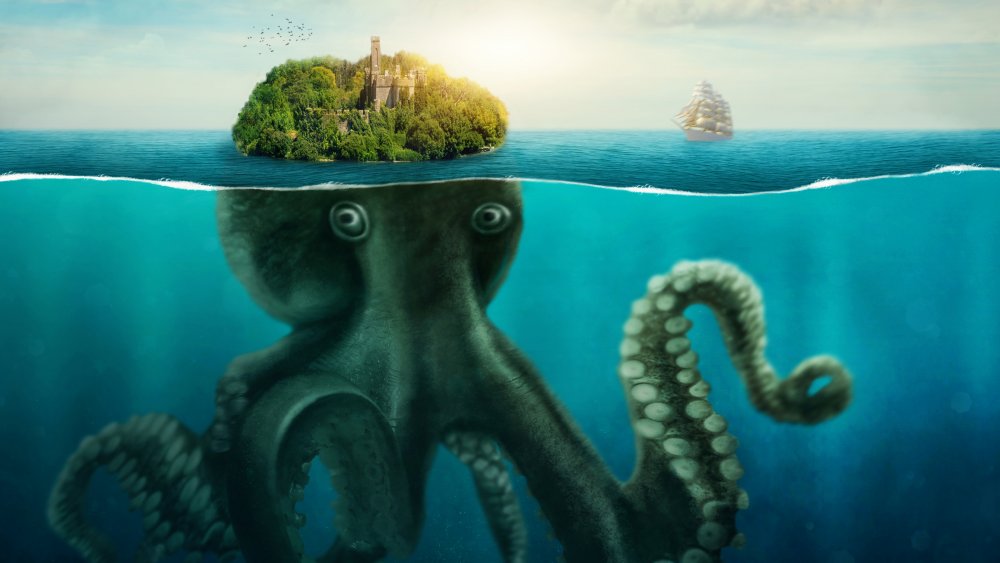
New, Uncharted Island Discovered In Antarctica

The Surprising Trick To Keeping Mosquitos Out Of Your Yard

How Being A Bully Changes Your Brain

Ancient 'Chewing Gum' Reveals How Woman May Have Looked 5,700 Years Ago
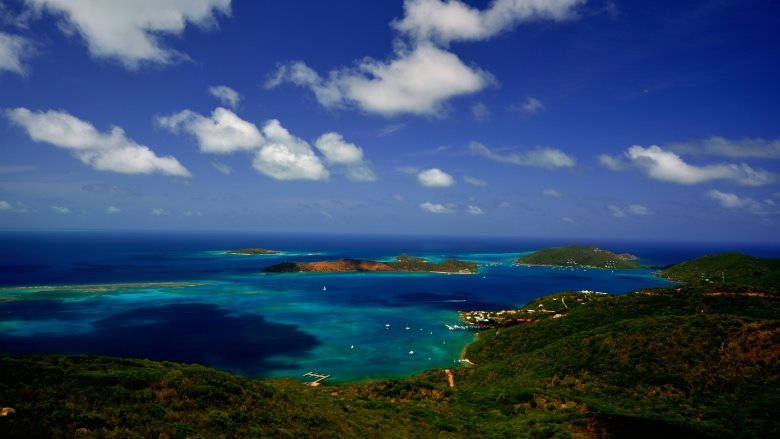
This Is How Much It Costs To Rent Richard Branson's Island

People Who Lost Their Life Savings In Really Dumb Ways
